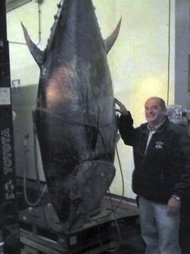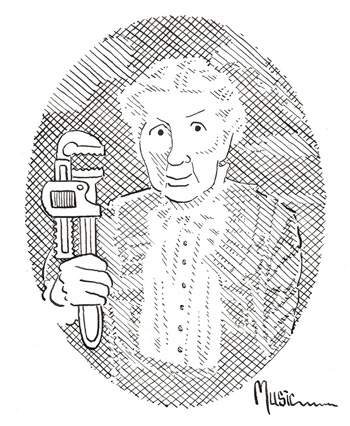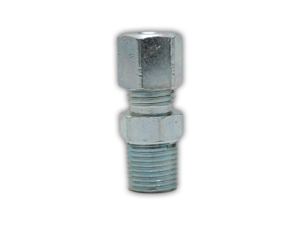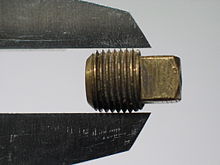Water News for November 2011
While you were getting out your winter clothes; giving thanks, and waiting for Target to open, a lot of important things happened in the world of water. Read on to hear all about it.
Due
to heavy agriculture and fertilizer use, parts of Southern New Jersey
now have radium in their drinking water.
A new website called FracFocus was put up to allow oil companies to be "transparent" about fracking.
Waterloo,
Ontario recently voted to reject fluoridation of its water supply,
adding 1,180,000 people to the 2.5 million whose communities have
voted out fluoridation during 2011.
A trend toward fluoride
abandonment is definitely in place.
See the list.
Here in Denton, TX, "our fair
city," an unnamed gas company was caught dumping its toxic
wastes into a creek.
The event was reported (name of offending company
withheld) on an inner page story of the local newspaper. The gas
company was required to clean up its mess and will likely be slapped
soundly on the hand.
In Honolulu, on the same day as the
dumping infraction above, a man and his pregnant wife who consumed
sandwiches while grocery shopping and forgot to pay for them at
checkout, were arrested.
They were not allowed to pay for the
sandwiches but held and charged, and their 3 year old daughter was
turned over to child protective services for the night.
Claims that California farmers are
wasteful and inefficient in managing their water supplies are
inaccurate, according to a new report released by the Center for
Irrigation Technology (CIT) at Fresno State University.
An ammonia leak at the water
purification plant at a California nuclear facility lead to an
emergency alert.
South Carolina's Dept. of Health and
Environmental Control announced a long-term plan to clean up water
contamination caused by the AVX Corporation at Myrtle Beach. The
contamination involves a degreaser called trichloroethylene, or TCE, which worked its way
through soil to the groundwater, where it eventually migrated
throughout the neighborhood.
Pentair, one of the nation's largest producers of water treatment equipment, has announced the release of
a new hybrid deionization system for residential users.
 |
A Massachusetts man caught an 881
pound tuna, but it was taken away from him by authorities. |
Bromide
in the Monongahela River remains at high levels despite state
regulators' attempts to limit the chemical.
A
Lafayette, LA dry cleaning establishment owner pled guilty to
negligently discharging tetrachloroethylene, a hazardous substance,
into a publicly owned treatment system to avoid paying disposal fees.
Fenton,
MI has hired an animal trapper to rid its water treatment plant of
woodchucks, foxes, skunks, coyotes, raccoons and domestic cats.
The
town of Amesbury, MA voted to end fluoridation of its water supply
after 44 years.
|
The Cavern Bridge at Izmir, Turkey
At first glance, there's nothing remarkable about this bridge. The arched stone slab straddling the River Meles, in Izmir, Turkey extends only 42½ feet and is about as simple as they come. But it's the age, not the physical aspects, of the Caravan that sets it apart. Built in 850 B.C., the bridge is 2,861 years old and has reportedly been crossed by the likes of Homer and Saint Paul.
The Caravan is one of
ten
record breaking bridges featured with pictures in a recent article. Find out which of the world's bridges are
tallest, oldest, most crossed, most photographed, etc. |
Hackers
were alleged to have destroyed a pump used to pipe water to thousands
of homes in a city in Illinois, but after investigation the FBI and Homeland Security ruled that the pump was not attacked by hackers.
Hopdoddy
Burger Bar in Austin, TX has installed reverse osmosis to remove
fluoride from its water.
A cancer-causing fracking chemical has been discovered in the aquifer
serving Pavilion, WY.
About
half of 1,500 swimming pools tested this summer showed improper pH
and chlorine levels.
A
wobblegong shark living in
a water desalination plant in Binningup, Australia has resisted eviction and may be allowed to stay.
The
Cherokee Nation has given a grant of $83,000 to the town of Roland,
OK to help with building a water plant.
You
have only until Dec. 7 to submit nominees for the US Water Prize!
A
study at the University of Minnesota found that even the best treated
wastewater contributes to the number of anti-biotic resistant "super
bacteria."
Since we're often asked about BPA from plastic water bottles, this should also be of interest: "People
who ate canned soup each day for five days showed a more than 1,200%
increase in urinary bisphenol A compared with those who consumed
fresh soup daily for the same period, a new study revealed; Bisphenol
A (BPA) is an industrial chemical used to make polycarbonate plastic for water bottles and food containers, as well as the protective
lining in metal cans." Full Article.
The EPA is being sued for allowing
illegal discharges of agricultural waters into the San Joaquin River.
How Fluoride Got into Drinking Water, and Where Fluoride Comes From
Condensed and Adapted from Dr.
Joseph Mercola's newsletter.
Files
of the Manhattan Project and the Atomic Energy Commission, now declassified, show that the original motivation for promoting fluoride
and water fluoridation in the U.S. was to protect the atomic bomb and
aluminum industries from liability.
Originally, the
fluoride added to water supplies came from the wastes of aluminum and atomic
bomb making, but after a short time the main source of fluoride
for sale to drinking water suppliers was a hazardous waste from the phosphate fertilizer
industry,
hydrofluorosilicic
acid.
Hydrofluorosilicic acid also typically contains arsenic, lead,
cadmium, and mercury, plus a variety of other contaminants that are
part of the phosphate ore, and, believe it or not,
it does not have
to be refined or filtered prior to being injected into municipal
water supplies.
Studies
on the health effects and safety of fluoride have always used
pharmaceutical grade fluoride—not the far more toxic
hydrofluorosilicic acid from the phosphate fertilizer industry. Until
very recently, there has been no interest in studying the effects of
the continued use of hydrofluorosilicic acid.
Recent studies,
however, have found that it increases lead accumulation in blood up
to seven times. It also increases lead absorption in bone, teeth and
other calcium-rich tissues.
Here is an amplification direct from Dr. Mercola's report:
"The brainchild of water fluoridation was Gerald Cox, a researcher with the Mellon Institute in Pittsburg. He received the suggestion to look at fluoride's dental effects from Francis C. Frary, then director of the aluminum laboratory for the Aluminum Company of America. Frary had reasons for the suggestion other than the possibility of protecting tooth enamel, however. He was very concerned about the fluoride pollution being generated by the aluminum plant, as lawsuits from surrounding farmers increased.
"Another major player in the creation of this scheme was Harold Hodge, the chief toxicologist of the Manhattan Project. As part of a group of scientists and engineers who helped develop the atomic bomb in World War II, Hodge was responsible for evaluating the toxicity of the chemicals used in the production of the bomb. One of the chemicals, as mentioned, was fluoride. Due to the massive amounts of fluoride required to produce bomb-grade uranium and plutonium for these nuclear weapons, the Manhattan Project also needed some way to avoid potentially crippling lawsuits.
"Last but not least, there was Robert Kehoe with the Kettering Laboratory, a private toxicology lab that ended up producing a massive bibliography of abstracts on the soundness of communal water fluoridation, and fluoride's (beneficial) role in public health.
"However, this research was not particularly independent or unbiased. Not only was Robert Kehoe working for the Fluorine Lawyers Committee, preparing defenses in fluoride litigation cases, the Kettering report on the health benefits of fluoride was also funded by the National Institute of Dental Research and fluoride-polluting industry-heavyweights like: Alcoa, Dupont, Reynolds Metals, The Aluminum Company of Canada, Kaiser Aluminum, and U. S. Steel."
 |
Pure Water Annie Explains MIP and FIP (as well as other mysteries you've been fretting about)
by Pure Water Annie
Like
most professions, the water treatment industry runs on initials.
I explained some in the last Occasional. Here are some more that give people trouble.
|
There is often confusion about the threads on the fittings and connectors used in water treatment in particular and small-pipe plumbing in general. Things used to be more complicated when undersink plumbing had such exotic
creatures as flare, fine flare, and Texas fine flare fittings to confound us. Now almost everything is done with compression fittings, pipe fittings, or the super convenient plastic push-in fittings.
The push-ins are easy. What confuses people usually is the distinction between a pipe fitting and a compression fitting. The picture below has both threads.
It's hard to see the difference, but there is a difference.
 |
The taper of the threads is what actually distinguishes pipe from compression fittings. On bottom of the fitting in the picture is a male pipe thread; on top is a male compression thread with nut. Pipe threads connect the fitting to another solid component, like a filter housing or a rigid metal pipe. The compression fitting with cap connects a tube to the fitting. The pipe fitting is taped with teflon tape to insure a seal. The compression fitting is not taped. |
The real confusion with pipe fittings comes from the fact that they have so many different descriptive names.
MIP stands for Male Iron Pipe, or some would say Male International Pipe. The same pipe size can also be called MPT, for Male Pipe Thread.
FIP means Female Iron (or International) Pipe and can also be called FPT for Female Pipe Thread.
To add confusion, NPT, which stands for National Pipe Thread. A Wikipedia quote will make this as confusing as possible: "
Sometimes NPT threads are referred to as MPT ('Male Pipe Thread'), MNPT, or NPT(M) for male (external) threads; and FPT ('Female Pipe Thread'), FNPT, or NPT(F) for female (internal) threads. An equivalent designation is MIP (Male iron pipe) and FIP (Female iron pipe). Also the terms NPS and NPSM are sometimes used to designate a straight, not tapered, thread. (this should not be confused with NPS meaning Nominal Pipe Size.?" Got it?
The gentle taper of the pipe threads can be seen when it is viewed in the calipers. |
 |
I won't bore you with the actual taper of pipe thread patterns. The main thing you need to know when dealing with water treatment equipment is that compression caps won't work on pipe threads and you can't screw male compression thread into a female fitting (like a filter housing port) that's made for pipe.
See also Pure Water Annie's Glossary of Water Treatment Terms on the Occasional's website.
 |
Numerical Wizard B. Bea Sharper ferrets out the watery facts that Harper's misses |
A Word of Introduction: Since B. Bea Sharper writes exclusively in the Harper's Index style (Number of years she's been writing this way--14), what she can write is limited. Fiction is tough. Nevertheless, a few years ago, she took a bet
at a Christmas party and won a falafel sandwich by writing the piece below. This unique retelling of a classic tale was subsequently added as a regular Christmas feature on the Pure Water Gazette's website. Here it is, with the promise that we won't drag it out again next Christmas.--Hardly Waite.
Number of Nights Before Christmas That 'Twas: 1
by B. Bee Sharper
Number of nights before Christmas that 'twas: 1
Number of creatures, including mice, that were stirring: 0.
Stockings that were hung by the chimney with care: 16
Approximate number of visions of sugar plums dancing in Timmy's head: 43.
Time when Timmy settled down for his long winter's nap: 10:30.
Number of clatters that arose on the lawn: 1.
Total number of miniature sleighs seen by Timmy when he tore open the shutters and threw up the sash: 1.
Number of tiny reindeer that were pulling the sleigh: 8.
Exact number of little old lively and quick sleigh drivers seen by Timmy: 1
Number of little round bellies the lively and quick sleigh driver with a nose like a cherry had: 1.
Total number of toys he had in his bundle when he came down Timmy's chimney: 176.
Number of stair steps Timmy quietly crept down in order to watch Jolly Old St. Nick go about his work: 14.
Number of times you'll have to click on this Conclusion to the Story link to find out what happened next: 1.
Please, Please, Don't Buy Me Another Dry Pellet Chlorinator
by Gene Franks
Whither thou goest, America, in thy shiny car in the night?--Jack Kerouac.
The lead sentence of the current Grist online magazine newsletter reads, "
‘Tis
the season of novelty ties and Christmas sweaters. Curb the trend
this year of holiday presents destined for landfill, and instead give
gifts that align with your values and actually do good for the world."
That's a pretty high standard. I'm not sure I agree that a gift has to "do good for the world."
To apply that standard would require an intense philosophical examination of every purchase. I' haven't yet been able to figure out if buying a pair of gloves is good or bad for the world as a whole. I'll leave that for Grist to decide.
In the 25 Christmases that Pure Water Products has been in business, we've never encouraged holiday gift buying.
This isn't because we don't believe in giving people gifts, but from a practical viewpoint a water treatment item isn't always the best gift.
I've seen the following happen more than once. Bob likes his undersink reverse osmosis unit so well that he decides to rack up a few points with his boss by giving him one for Christmas. So he pushes his credit card to the limit and prepays us or someone like us to install the unit in the boss's kitchen. Bob didn't consider that Mrs. Boss may not want someone drilling a hole in her new granite countertop, she doesn't want an extra spigot that doesn't match the special sink faucet she had imported from Switzerland, and she certainly doesn't want a big tank taking up all her undersink space.
Bob meant well (perhaps), but he really created a big problem for his boss, who now has to decide if it's better to risk hurting Bob's feelings by asking him to take the gift back or risk divorce.
When I was in college, my Dad always gave me auto insurance for Christmas. Not a
sexy gift, but I appreciated it and never had to return it.
At Pure Water Products, we have never, ever relied on Christmas as a sales tool.
We try to do
our very best all year.We've never had "Christmas specials" or even made gift suggestions.
If you want to buy a Christmas gift from us,
we'll send the best product we can and do our best to get it there on
time.
If you want, we'll even
ship it direct to the recipient and put in a note that
says "Merry Christmas from Bob." But you'll get the same product at the same price and with the same "best we can do" service any day of the year.
We also suggest that you consider the appropriateness of the gift. Water treatment products are sometimes but not always good gift items.
Please, Please, Don't Buy Me Another Tie:
I'm Fed Up with Hole-to-Hole Economics
by Hardly Waite, Pure Water Gazette Senior Editor
A few Christmases ago, I was given a kettle, which now leaks. I could mend it, if only I could tighten the base. But one of the screws has a star-shaped slot with a spike in the middle, which is designed to prevent repairs, as no available tool will fit it. My kettle was for Christmas, not just for life. So I will throw it away, and help to build an earthly paradise by buying a new one.--George Monbiot.
The day following Thanksgiving is being promoted again this year by an international organization as "Buy Nothing Day." The Gazette enthusiastically endorses Buy Nothing Day and urges its readers to participate by not joining the masses who, like Pavlov's dogs, will respond to the first ringing of the Christmas bells by rushing, obedient and salivating, to the malls with credit cards in hand.
A few years ago, in an article called "The Gazette’s Great Water Article," Gene Franks wrote:
Although we "average Americans" may think of ourselves as gentle folks, we are active participants in a cruel and unprecedented pillaging of the world that sustains us. We do not reflect that our unbridled consumerism is no accident. We are programmed to consume by schools, media, and tradition. Even the politicians we elect take on the role of detail men, sales reps for big business, today hawking drugs, tomorrow automobiles or a dam project in India. In the days of bustling economic growth after World War II, an American retailing expert named Victor Lebow proclaimed: "Our enormously productive economy demands that we make consumption our way of life, that we convert the buying and use of goods into rituals, that we seek our spiritual satisfaction, our ego satisfaction, in consumption. We need things consumed, burned up, worn out, replaced, and discarded at an ever-increasing rate.’"
Lebow, of course, would be very proud of us.
But perhaps we should reflect on whether we are satisfied with the role they are casting us in. Didn't it make you a little angry to be asked, for the sake of our country, to do nothing more than go out and buy something?
The idea that our obligation is to consume is based in the notion--a bizarre notion when you really pause to take thought--that we can somehow consume our way to happiness. That if we can only consume enough, we will eventually live in a world of plenty. Doublespeak indeed. George Monbiot has summed up this view of world economics nicely. I call his system "hole-to-hole" economics. He writes:
The modern industrial economy works like this: resources are dug from a hole in the ground on one side of the planet, used for a few weeks, then dumped in a hole on the other side of the planet. This is known as the Creation of Value. The Creation of Value improves our quality of life. Improvements in our quality of life make us happier. The more we transfer from hole to hole, the happier we become.
That this hole-to-hole transfer plan isn't working too well should be apparent from the growing gap between haves and have-nots. Even the elites at the top of the heap who reap the benefits don't seem very happy. They always seem to need more and more, so they keep spurring us on to ever greater levels of consumption. I once read that one of the Rockefellers, David, I think, if he never slept and devoted 24/7 to spending his money, and if he could spend at the rate of $29,000 per minute, would never be able to spend his wealth. Nevertheless, he was working a fitful 17-hour-day in an effort to amass greater wealth. It's hard to rest when there are resources to be moved from one hole to another. George Monbiot continues:
Unfortunately, we are not yet transferring enough. According to the Worldwatch Institute, we have used more goods and services since 1950 than in all the rest of human history. But we still don't seem to be happy. Indeed, over the same period, 25-year-olds in Britain have become ten times more likely to be afflicted by depression. One in four British adults now suffers from a chronic lack of sleep, and one fifth of schoolchildren have psychological problems. Over the past 13 years, mental health insurance claims have risen by 36 per cent. American studies suggest that between 40 and 60 per cent of the population suffers from mental illness in any one year. The World Health Organisation predicts that by 2010 depression will become the second commonest disease in the developed world. Unless we start consuming in earnest, we'll never experience real joy.
Never before have we been given such an overt, unblushing mandate to consume. What can I do for my country? Go shopping. Take a plane trip. Buy a new automobile. Conservation, which we at least talked about in the 1970s, has become a dirty word in the current American political arena. Gluttonous over-consumption is now synonymous with patriotism.
 |
Patriotic Shopper, Rushing to Save the Economy and Support our Troops |
Maybe this time of change we are experiencing is the time when the mad spiral of consumerism we’ve been caught in should stop. Surely our generation has more to contribute than the consumption of trinkets.
Please don't buy me another tie. I have plenty. I also have plenty of cute tee shirts and baseball caps with funny sayings and electronic marvels that do all the things I don't want to do. And please don't buy me, or yourself or anyone else, a leaf blower. Show some self respect.
When they ring the golden bells of Christmas, please don't salivate.
You can learn more about Buy Nothing Day at http://www.buynothingday.co.uk/
You can read Shirley Wilkes Johnson’s article here on the Pure Water Gazette website.
You can read "The Gazette’s Great Water Article" here.
|

